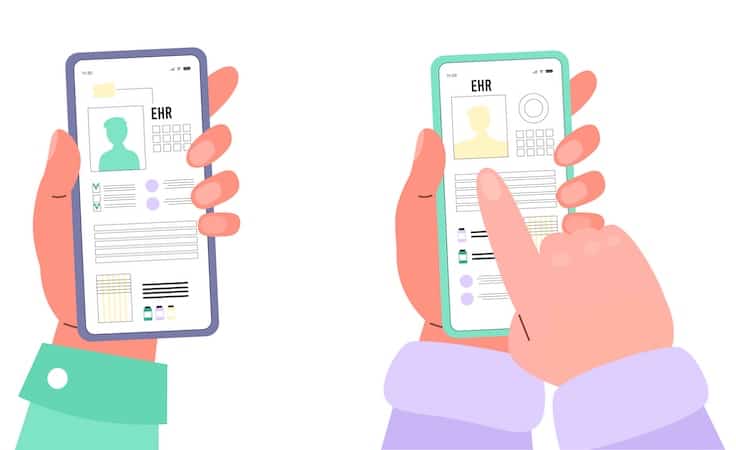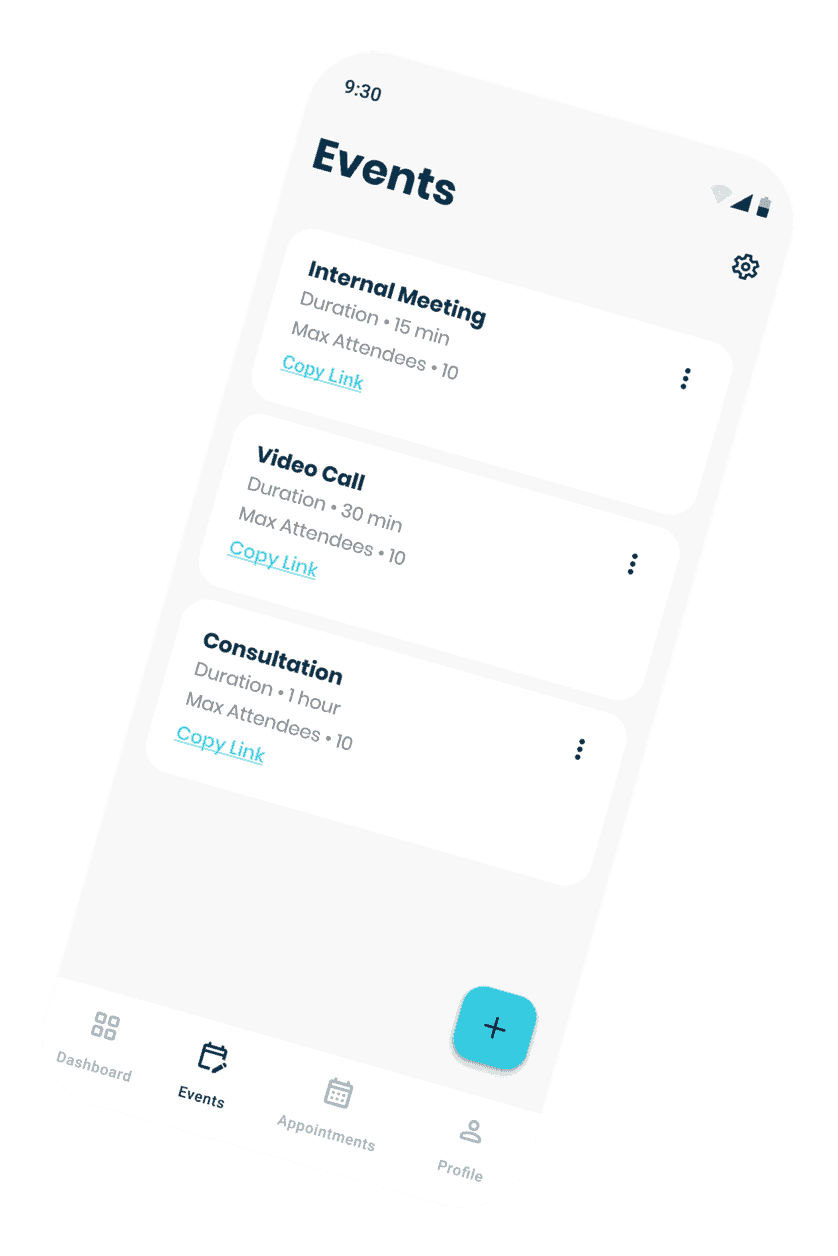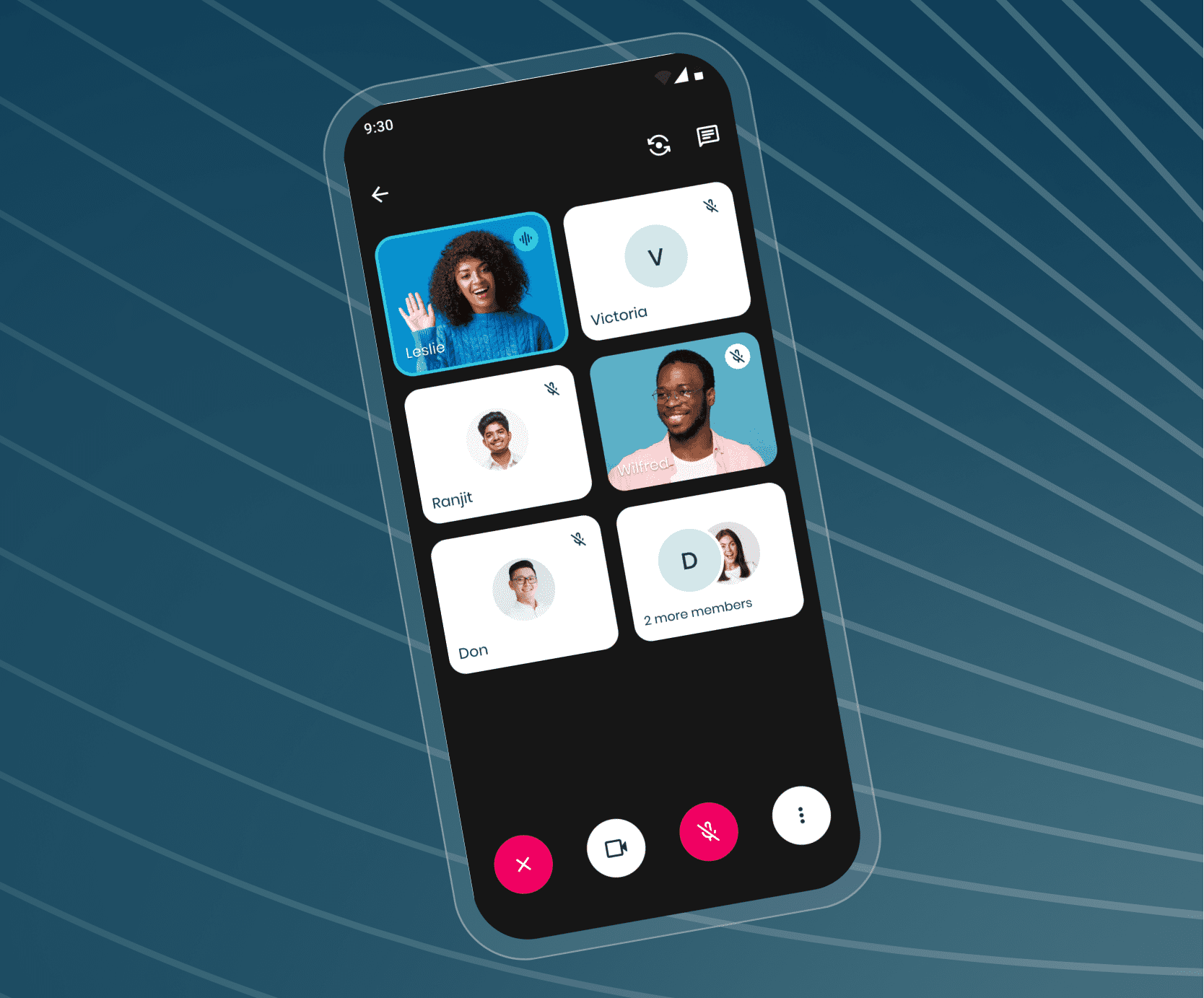Today, a telemedicine app is a prerequisite for any forward-looking, fast-developing healthcare organization. Getting medical help remotely has become ubiquitous. If you’re playing this catch-up game, a white label telemedicine app may be just what the doctor ordered.
Without further ado, let’s discuss everything you need to know to choose a proper white label telehealth app for your business.
Top Takeaways:
- A white label telehealth app is an off-the-shelf solution that requires minimum rebranding and setup effort before it becomes available to patients and providers.
- Look for white label platforms with a modular design to pick and pay only for the events that make the most sense for your healthcare business.
- If a white-labeled telemedicine solution offers full customization and access to source code, you’re dealing with a low-code platform. A no-code white label product comes as is.
Table of Contents:
- What Is a White Label Telemedicine Platform?
- How Does a White Label Telemedicine Product Work?
- Custom vs. White Label Telehealth Apps
- When to Choose White Label over Custom?
- Features of a White Label Telehealth Platform
- Benefits of White-Labeling a Telemedicine App
- Things to Consider When Choosing a White Label Telehealth Solution
- Topflight’s Expertise in the Field
What Is a White Label Telemedicine Platform?
White label telehealth software is a suite of programs with telemedicine features that healthcare providers purchase from a service provider and use under their branding.
Most white label solutions function as software-as-a-service businesses with monthly and yearly subscriptions. So, instead of building a custom telehealth platform, healthcare organizations can subscribe to such a white label platform and offer telemedicine services.

There’s simply no need to build anything: providers pick the features (aka modules) they need for their practice and launch a new product almost immediately.
How Does a White Label Telemedicine Product Work?
In the early 2010s, when the first white label software products started appearing on the market, companies had one option — to buy the product as is. The only viable option was rebranding a product by applying a new name and logo. The rest of the product stayed intact in its entirety.
Lately, SaaS providers have adopted a more flexible approach, providing white label solutions with a modular structure. Today, businesses can configure practically any white label product according to their preferences. They pick different modules and combine them into a single product that serves their purposes.
For example, you can mix and match the following basic modules to create required user experiences:
- authentication
- scheduling
- voice calls
- video calls
- chat
As a result, you may end up with various telemedicine products, for example:
| Focus on video calls, minimalist approach | Focus on messaging | The most holistic approach |
|
|
|
Related: HIPAA Compliant Audio and Video Callin
Such a granular configurable nature of a white label product gives businesses more options to quickly apply telemedicine workflows that fit their best practices. Previously, they could only purchase a white product as is, and so the price would inevitably cover some unnecessary features.
Related Article: Telemedicine App Development Cost
However, with a modular approach, companies can choose and pay only for the features they really need. After these simple manipulations, all that’s left to do is:
- rebrand the solution
- set up hosting (using cloud technologies or on-premise servers)
- train personnel
- promote the new telemedicine software to patients
All selected features will work out of the box.
Also Read: A Complete Guide to Patient Engagement Platform
Custom vs. White Label Telehealth Apps
As you probably know, white label solutions usually juxtapose custom software. Let’s see how they compare in the telemedicine space.
Custom product benefits:
- full-blown customization
Unique workflows demand unique features and user experiences. Indeed, with the custom variant, you get full freedom to augment a telehealth app as you want. That also includes integration virtually with any third-party services that may be necessary.

- Ability to sell as a white label
After you’ve developed a custom telemedicine app, there’s nothing wrong with making it available as a white label. Of course, the app user journey may not satisfy all customers, and you must go the extra mile to include more modules, but the option is definitely there.
Related: Healthcare App Development Guide
- No monthly/yearly fees besides hosting
As already mentioned, many white label products have a subscription fee. The price typically depends on the number of monthly active users or other throughput metrics. However, with a custom-built solution, you’re at will to set up your own cloud environment and pay only for hosting, regardless of how many customers you serve.
Related: Telemedicine App Development
- Priority for new features
When you build a digital product, you own its roadmap 100 percent, which means you get to decide what features will be implemented next. Whatever the reason for updating the telemedicine platform — change of workflows, new compliance requirements, or new features — you decide what goes next.

- Compatibility with any platforms
Whether you want your solution to support mobile, web, mobile web, desktops, tablets, smart sensors, or other platforms, you’re only limited by your development budget. In contrast, with a white label, you’re left to rely on whatever platform white label telemedicine companies decide to support out of the box.
- Workarounds virtually for any integrations
Software rarely exists in a vacuum, especially in the healthcare industry. A new healthcare app must integrate with EHRs, CRMs, and other existing solutions. What makes a custom-developed platform stand out is that you can integrate it virtually with anything.
Related: Custom Mobile App Development Guide
In the worst-case scenario, your developers will write scripts to pull health data from existing systems and sync it with the app’s database.
Also Read: Buying or Building you Telehealth Solution: The Better Choice
Custom product disadvantages:
- Longer time to market
You can’t be up and running within a couple of months when creating a custom telemedicine solution. It’s simply not viable. Developing anything like that from scratch requires at least 6-9 months, with 4-5 team members working full-time. And the end result will be barely comparable to a telemedicine white label solution because 6-9 months is the time to build an MVP — the initial releasable version.
- Higher cost
A decent MVP starts at around $180K, whereas a white label telemedicine platform may cost almost 10 times cheaper. That’s the price you pay for enabling unique workflows and retaining full control over the product’s roadmap.
Related: MVP App Development Guide
- Difficulties with hiring and managing the right team
If you’ve never dealt with software development before, choosing the right developer can be a challenge. And it’s quite a sprint with 6 months min required for an MVP. You simply can’t wait 3 months and discover that a team of developers doesn’t have all the necessary experience. As they say, “Software is hard.” A part of that is many teams mimic relevant experience when you need pros.
- Ongoing maintenance costs
As we know from our previous blogs, any custom software needs maintenance: fixing issues, adding new features, etc. So, be ready that your development budget will turn into a maintenance budget after launching the product. And even though the cost is much lower, that’s still something to consider.

White label product pros:
- Unprecedented time to market
The best thing about a whitelabel telemedicine app is way faster time to market compared to a custom-built solution. You can launch 3 times faster using a pre-built solution. Some platforms allow you to launch a comprehensive telemedicine suite within 2 months depending on the level of customization you need.
- Much lower cost of development
Any provider will welcome up to 65% cost savings available with white label solutions. No-code products require minimum coding, and it’s primarily connected with integrations and setting up a digital product in the cloud.
- Out-of-the-box HIPAA compliance
Of course, custom development of healthcare apps, such as healthcare platforms, implies conforming to HIPAA regulations, too. However, with a white label, you get this security prerequisite off the shelf without extra effort. Furthermore, service providers can help you set up a HIPAA-compliant DevOps environment to maintain the product within security guardrails.
Related: HIPAA-Compliant App Development Guide
- Optionally: ever-updating product with no extra investment
Modern white label solutions, especially those available via a subscription, include future updates at no additional cost. Once again: service providers keep enhancing a product, putting in development hours, and you can use these upgrades for free.

- Ready integrations with EMRs and other healthcare software
White label telehealth solutions also must work with health records and other existing infrastructure like EHR systems, CRM, or CMS platforms. That’s why you’ll often find out-of-the-box integrations with major third-party solutions.
Related: How to integrated your mHealth app with an EHR
- No need to hire a dedicated team for development/maintenance
White label platforms that come as no-code require almost zero coding, and low-code solutions allow for code changes. However, hiring a dedicated team is unnecessary because you can always revert to a service provider’s development expertise for implementing these systems.
- Modular approach
No one likes to pay the full price for a product and then use only a few key features vital for their businesses. That’s why modular solutions are becoming so popular. Founders can pick any components that work best and combine them into a unique solution, paying only for the functionality they really need.
- Well-tested UI/UX
Patients and doctors will only stick with a telemedicine platform only if it has a well-thought-out and engaging user interface. Fortunately, all white label products undergo vigorous testing before becoming available.

White label product cons:
- Not all legacy software is readily supported
You may be running a rare modification of an EHR or a practice management system that doesn’t work with a white label out-of-the-box. Of course, if a white label product includes a low-code option, you can count on integrations. However, that will require additional effort.
- Subscription fee
An ongoing fee is a necessary evil — that’s how you ensure your solution remains viable and gets new updates. One way to remedy this condition is by purchasing a longer licensing agreement, for example, for a year.
Some service providers even offer lifetime licensing agreements. Or, you can pick the modules and pay only for those that work for you.
- You do not define the product roadmap
Unlike custom development, the white label implies giving up control over future feature releases. This is true for all no-code white label solutions. However, if there’s a low-code option, nothing stops you from adding custom code on top of ready-made telemedicine components.
- Lack of support for required platforms
Similar to giving up control over a product roadmap, with a white label, you have to rely on service providers to support necessary platforms. For example, if a white label telehealth app does not work on Apple Watch, there’s a minimal chance that your request will be granted or given priority at all.
- Typically, can’t resell
Most white label solutions do not include the option to create your own unique product that partially relies on telemedicine components and resell licensing to other businesses.
The good news is that both custom and white label telemedicine or telehealth platforms or software are scalable. And when using a white label product, you don’t need any additional effort to onboard another thousand users.
Also Read: The Best Telemedicine Apps and How to Choose
When to Choose White Label over Custom?
Based on the upsides and disadvantages of custom and white label products we’ve just discussed, you should already have some understanding of which one to choose. To give you a better idea, we need to touch on the power of low-code and no-code solutions.

Because even though a traditional white label platform comes as a no-code product (nothing to code, just assemble like Lego bricks), you can also come across low-code options. A low-code white label solution allows advanced customization — adopt some modules exactly as they are, and customize the ones that need a unique touch.
The power of no code and low code
No code is just a version of low code set in stone, so to speak. Hard-defined features that are ready to go — that’s no code; you take it as it is, rebrand, and it works out of the box.
Also Read: Medical Practice Management Guide
At the same time, if a white label solution offers a low-code option, you can hire your own team to continue development as you see fit. In other words, you don’t depend on the team that created the said white label product.
Related: No Code Healthcare App Development Guide
That’s a typical scenario for well-established products that have been on the market for several years. It takes time to grow the pool of developers experienced in the low-code platform. For other low-code platforms, you can rely on service providers or let your in-house programmers tinker with code.
Despite this flexibility with a codebase, there are still limitations to the customization available with low-code white label products (architectural, etc.).

I vividly remember working with a low-code marketing CRM platform a few years ago. Despite all its flexibility, we still had to jump through hoops to complete the job. Even certified developers couldn’t change the CRM’s fundamental flows.
And with custom development — there are no limits at all. So what to choose and when?
White Label vs. Custom Telemedicine Platform
Custom is ideal when you need something advanced, like an AI assistant that starts the call and handles preliminary diagnosing. A bot can collect and analyze preliminary health data and switch to a real doctor.
Custom is perfect when you need unlimited customization options. Or when you plan to make a white label solution from your product.
Also Read: How to Increase Medical Practice Revenue
White label is unrivaled for entering the market almost on the spot and then gradually developing your product at a fraction of the cost — but with “limited functionality” in the sense that a platform needs to fit your main business processes and workflows.
Features of a White Label Telehealth Platform
Different white label telemedicine platforms can have various features depending on the health practices they target. Yet, several must-have features have become ubiquitous and defining for telemedicine. What are they?

Authentication
Authentication may seem insignificant compared to other core functionalities like video calling. However, there are many things to consider.
First, we can have multiple ways to authorize users: social logins, email, phone, etc. Second, authentication may have many tiny options that are easy to overlook. For example, password restoration and 2-factor authentication.
Finally, some providers may choose to use their existing authentication mechanisms. So they will opt for a telehealth white label platform to easily switch out an authentication module.
Chatting
Real-time messaging is critical in telemedicine apps. On the surface, it’s a pretty simple feature. However, if you think about WhatsApp and other similar applications, you’d have to admit that they have been adding new features for years. So there must be something to add, right?
- message delivery status
- read/unread
- message editing
- sharing images, video, and text files
- backup of all messages
- group chats, search, encryption
Related: How to Develop a Chat or Messaging Application
And that’s just the tip of the iceberg, as you understand.
Video and voice calling
Video calls are definitely the core feature of any telehealth application. Again, anyone can recall a Skype call and describe the basic options customers expect from a video call. So instead, let me list a few more exciting video calling features:
- 1-on-1 audio & group calls
- direct links to audio and video calls (mobile & web)
- microphone and camera on/off toggle
- audio and video output configuration (web only)
- active-speaker recognition
- screen sharing for video calls (web only)
- recordings for audio & video calls
Related: How to Build a Video Calling App Development
Scheduling
A white label solution should allow the patient to schedule an appointment and the doctor to manage their availability. Calendly and Google Calendar make this feature look simplistic. Yet, there’s a lot that goes into a seamless appointment booking flow, for example:
- create/view/edit/delete event types
- unique scheduling link
- preview in scheduling mode
- define availability
- list view (upcoming appointments)
- calendar view
Scratching the surface here, again. I’ve just cited the top of the list from a typical telemedicine scheduling module.

Notifications
Notifications kind of come complementary to the rest of the features. Patients and providers must get reminders for upcoming events, and notifications perfectly serve this purpose.
User profile
I don’t know about you, but the user profile always sounds like the most tedious part of any app. But in a healthcare app, it’s as essential as anything else. That’s where all patient data is stored, and the medical history is easily and securely available to providers.
Advanced stuff: AI, integrations with smart sensors, etc.
Finally, AI/ML options, like an AI chatbot, and integrations with smart sensors can turn your telemedicine solution into a continuous care solution with remote patient monitoring functions.
Also Read: AI App Development Guide
We’re leaving out an admin panel that may be useful if you want to directly manage medical specialists with access to a system.
Benefits of White-Labeling a Telemedicine App
Based on everything we’ve discussed, it’s easy to spell out the main advantages providers get when opting for a white label telemedicine platform.
Your brand is ready for the digital age
The recent pandemic proved that healthcare organizations with a minimal digital footprint face unprecedented challenges. With a white label solution, they can:
- go to the market faster
- avoid high development costs

Your healthcare services are more accessible
Since white label solutions scale so well, once you’re up and running, you can immediately start reaching out to more people.
- serve more patients
- optimize doctor’s schedule
Higher ROI
The bottom line is that you get more paying customers, regardless of location, plus the bonus of optimized costs.
Things to Consider When Choosing a White Label Telehealth Solution
Despite all the advantages of a white label telemedicine solution, let’s quickly go through a few critical things to consider when choosing such a product.
Branding
How difficult will it be to rebrand a white label? Will a service provider simply slap your logo onto the product, or can they offer comprehensive rebranding? Pick solutions that allow you to customize the color palette, fonts, UI animations, etc.
In other words, the more changes are possible, the better. You won’t necessarily need all of them, but the choice always helps to create a user experience in-tune with your brand.
Deployment flexibility
Once you purchase a solution, you’ll need to deploy it and make it available to customers. Depending on your requirements, deployment may take place in the cloud or via on-premise servers.

Will a service provider assist with deployment regardless of your hosting preferences? Will they set up all required DevOps infrastructure to keep your product updated in the future?
Updates
Speaking of updates, it helps to know whether you can count on any feature upgrades and whether they will require additional effort. Does the company make new updates available immediately after testing at no charge, or do you need to upgrade your plan to access new app features?
Monolithic vs. modular architecture
Finally, pay attention to whether a white label product comes as a monolithic solution or allows you to pick only necessary modules. Platforms with modular architecture are beneficial because you won’t need to pay for extra functionality, and the final product will precisely match your business needs.
Also Read: Women’s Health Tracking App Development Guide
Topflight’s Expertise in the Field
We’ve worked on several healthcare products that put remote connectivity front and center. So, when COVID hit, and the telemedicine market got on its ear, we merged this experience and got busy turning our telemedicine development best practices into engaging solutions.
Some features of the software we worked on include:
- Telehealth essentials such as video and voice calling, scheduling, authentication, and more.
- Clinical essentials such as revenue cycle management, prescriptions management, and more.
- Conversational AI allowing patients to dig up insurance info, find a provider, reschedule appointments, and practically anything you’d like to request.
Also Read: HIPAA-Compliant App Development Guide
Both white label and customization scenarios must include the following:
- out-of-the-box HIPAA compliance
- robust security measures
- ongoing quality control
- consistent and dependable performance at scale
Schedule a call to learn more about getting your business onto the telehealth rails. We’ll gladly provide more insights on our white label telemedicine software services.
[This blog was originally published on 3/29/2023 but has been updated with more recent content]
Frequently Asked Questions
Which hosting variant is more secure for a white label telemedicine platform, using on-premise servers or the cloud?
Popular cloud services providers like Google, Amazon, and Microsoft, among others, offer HIPAA compliant data storage and usage without causing extra costs connected with physical safeguards.
How do low-code and no-code relate to white label apps?
A white label app is practically the same as no-code that’s offered as is. Low-code is a perfect fit if you have your own developers or plan to continue working with a service provider’s developers to extend the app’s functionality according to your roadmap.
How long does it take to build on-demand app like Practo?
About 6-9 months for a releasable MVP if we stick with our ready-made no-code telehealth components.


